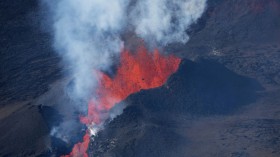Wildlife officials have installed hidden cameras at an Australian conservation site. More than 20 quolls, carnivorous marsupials thought to be almost locally extinct, were spotted.
Researchers have been surprised and delighted by a secretive native animal from Queensland's Atherton Tablelands that was thought to have almost completely disappeared.
Spotted Tail Quoll
The spotted-tailed quoll (Dasyurus maculatus), which ranges in size from far-northern Queensland to Tasmania, is the second-largest carnivorous marsupial in Australia following the Tasmanian devil. It has two recognized subspecies.
According to a previous study, quoll populations had declined to extremely low levels in places like the Atherton Tablelands and had completely vanished from some of their former range in the Wet Tropics.
Hidden Cameras
More than 20 quolls were captured on camera by Australian Quoll Conservancy (AQC) volunteers at the Danbulla National Park close to Lake Tinaroo.
According to AQC President Alberto Vale, the number of quolls has not necessarily increased significantly; rather, the use of technology has made it possible to record more quolls.
He claimed that because quolls are so elusive, no one will ever find them unless they are actively looking for them. The animals were lured by the officials, who are authorized to do so, and motion-sensor cameras allow them to keep track of their population.
No Cages, No Interference
By strategically positioning unobtrusive motion-sensor cameras throughout the protected area behind low-hanging lures, the AQC team captures the quolls.
The quolls can be seen standing up to grasp the lure in recorded vision and photographs. The recorded vision can then be used to estimate the quoll's age, height, and other characteristics.
The sites are unaffected and the quolls do not have to be captured because the cameras stream back in real-time to a server. According to Vale, one of the best ways to study quolls is to not touch them, don't cage them, or do anything else that might harm the species.
Read also: Native Magnolia Tree Species Rediscovered in Haiti After Nearly A Century of Disappearance
Threats
According to the Department of Climate Change, Energy, the Environment, and Water, the spotted-tailed quoll's range and population have significantly decreased since European settlement, with many populations becoming "fragmented and isolated."
In 2020, a study led by Dr. Conrad Hoskin, an associate professor at James Cook University, found a concerning decline in the spotted-tailed quoll population in Far North Queensland. The past study was published in the journal Australian Mammalogy.
Not Cats. Surprisingly, Hoskin claimed that while there were several threats to quoll populations, feral cats were not one of them.
He clarified that cats and quolls stay away from one another. Cats might prey on a juvenile, but females do guard the young ones. An adult quoll is a strong, large animal; a cat would just not mess with one.
Toads and Roads. Hoskin claimed that cane toads and cars posed the greatest dangers to quolls on the Tablelands.
He emphasized how many toads are reproducing in Lake Tinaroo. The team members were worried that the quolls might consume toads and become poisoned.
Roadkill is another danger to spotted-tailed quolls. Around the upper end of the Gillies Range, some roadkill can be seen. For male quolls that leave the Tablelands during the breeding season in search of females, traffic is a major problem, ABC News reports.
Related article: Critically Endangered Shimmering Hummingbird Seen in Columbia, 12 Years After Last Sighting
© 2024 NatureWorldNews.com All rights reserved. Do not reproduce without permission.





